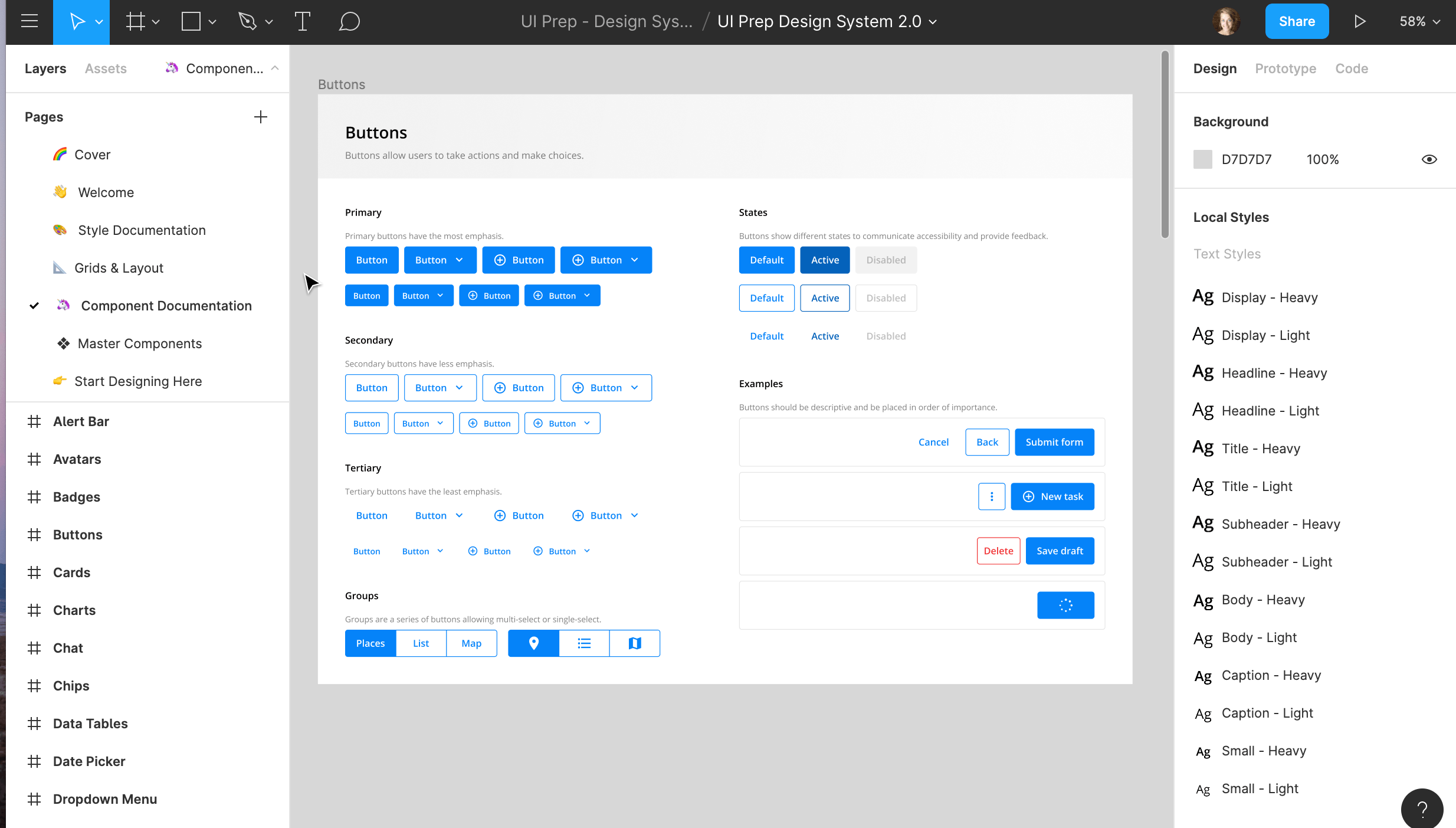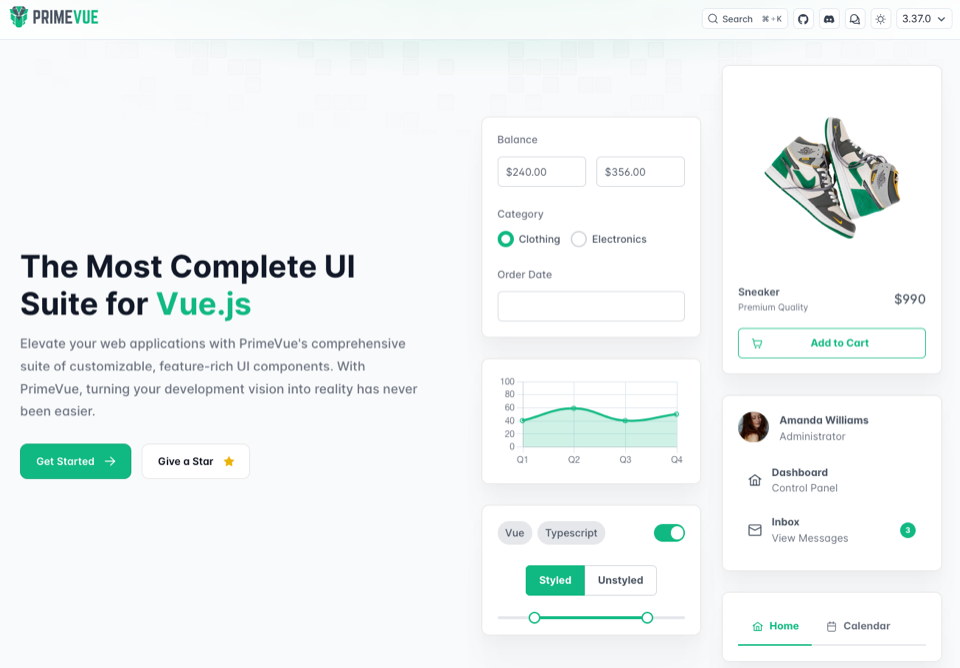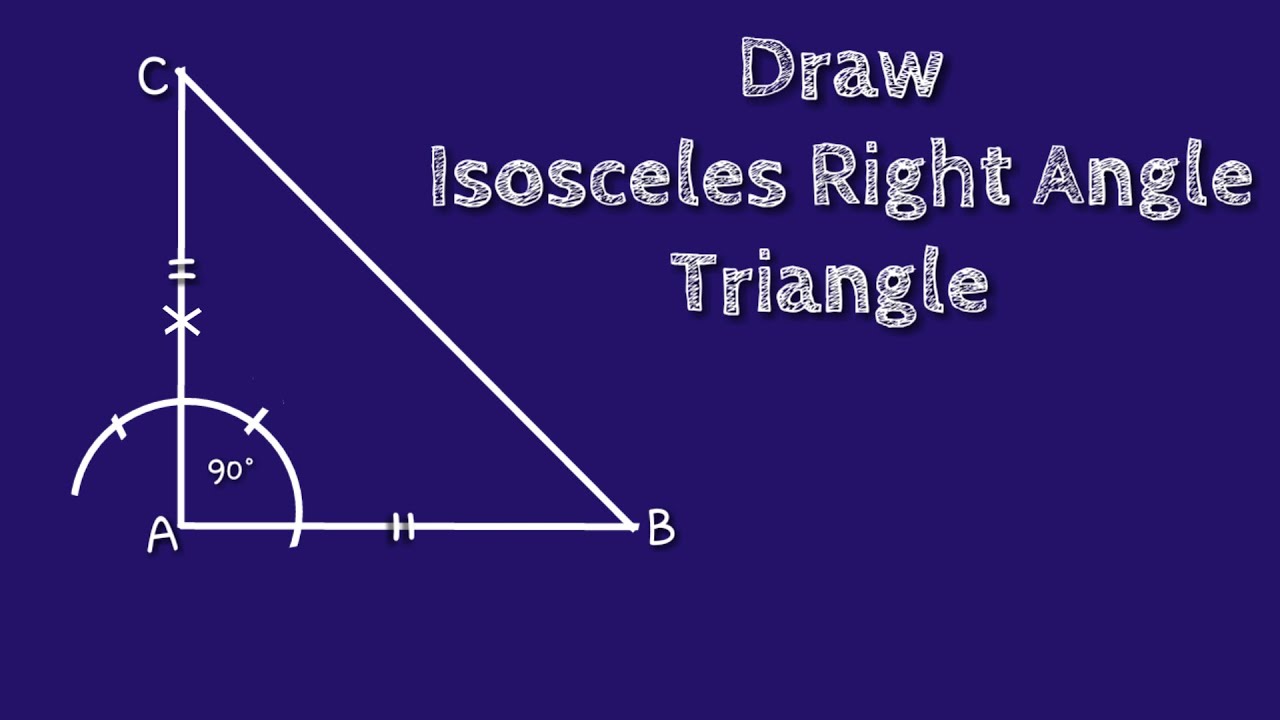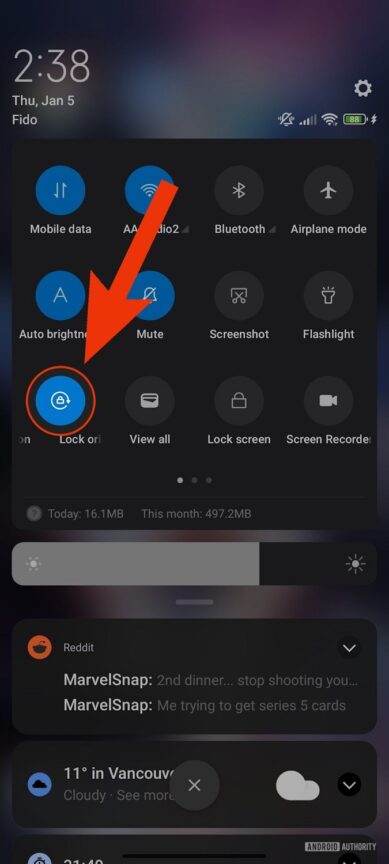Mastering PrimeVue: 5 Anchor Component Tips

PrimeVue is an exceptional open-source UI component library that empowers developers to create stunning and highly interactive web applications. Among its vast collection of components, the Anchor component stands out as a powerful tool for creating interactive links and managing routing in your Vue applications. In this article, we will delve into the Anchor component, exploring its capabilities and sharing expert tips to help you master its use. By the end, you'll be equipped with the knowledge to leverage this component effectively, enhancing the user experience and navigation within your web projects.
Understanding the PrimeVue Anchor Component

The Anchor component, PrimeVue’s implementation of the Vue Router’s router-link, is a versatile and feature-rich tool designed to enhance link functionality and user navigation. It offers a range of advantages over traditional HTML anchors, providing developers with more control and interactivity. Let’s explore some key aspects of this component.
Dynamic Routing with Router Links
One of the standout features of the Anchor component is its seamless integration with the Vue Router. By using router links, developers can easily manage navigation between different views and components in their applications. This dynamic routing capability ensures a smooth user experience, especially in single-page applications (SPAs), where content is loaded and updated without full page reloads.
For instance, consider a scenario where you have a web application with multiple pages, each representing different functionalities. With the Anchor component and router links, you can easily direct users to specific pages or sections of your app by simply specifying the route path. This not only improves the user journey but also simplifies the development process by abstracting away complex URL manipulations.
Customizable Appearance and Styles
PrimeVue’s Anchor component allows for extensive customization, enabling developers to align the component’s appearance with the overall design of their application. Whether it’s adjusting the text color, adding icons, or applying specific hover effects, the Anchor component provides the flexibility needed to create visually appealing and user-friendly links.
Additionally, PrimeVue's theming system ensures that any style changes made to the Anchor component are applied consistently across your application. This means that you can create a cohesive and professional look for your links without worrying about style inconsistencies.
Interactive Features and Events
The Anchor component offers a range of interactive features and event handlers that further enhance its capabilities. For example, you can easily add tooltips or pop-up messages to provide users with additional information when they hover over a link. This not only improves the user experience but also allows for more engaging and informative interactions.
Furthermore, the Anchor component supports event handling, allowing you to execute custom code or trigger specific actions when a link is clicked. This opens up a world of possibilities for creating dynamic and responsive applications. For instance, you could use this feature to track user interactions, perform server-side operations, or even trigger animations and visual effects.
| Feature | Description |
|---|---|
| Dynamic Routing | Seamless integration with Vue Router for managing navigation between views. |
| Customizable Styles | Extensive customization options for aligning the component's appearance with the overall design. |
| Interactive Features | Tooltips, pop-ups, and event handling for engaging user interactions. |

Expert Tips for Utilizing the Anchor Component

Now that we’ve explored the capabilities of the PrimeVue Anchor component, let’s dive into some expert tips to help you make the most of this powerful tool.
1. Utilize Router Links for Seamless Navigation
As mentioned earlier, the integration of the Anchor component with the Vue Router is a powerful feature. By leveraging router links, you can create a dynamic and intuitive navigation system within your application. Here’s how you can utilize this feature effectively:
First, ensure that you have the Vue Router installed and properly configured in your project. This will allow you to define routes and views, which are essential for managing the navigation structure of your application.
Next, within your components, use the router-link directive provided by the Vue Router to specify the target route. For example, to navigate to a route with the name "home", you would use the following syntax:
Home By using router links, you ensure that navigation remains consistent and predictable, even as your application grows in complexity. This approach also abstracts away the need to manage URLs manually, making your code more maintainable and easier to read.
exact or active-class to further customize the behavior and appearance of your links.
2. Customize Styles for Brand Consistency
One of the key advantages of the PrimeVue Anchor component is its flexibility in terms of styling. By leveraging PrimeVue’s theming system and CSS variables, you can easily customize the appearance of your links to align with your brand guidelines or design preferences.
For example, let's say you want to change the default text color of your links to match your brand's primary color. You can achieve this by modifying the appropriate CSS variable. Here's a simplified example:
:root {
--primary-color: #ff5733; /* Your brand's primary color */
}By adjusting the --primary-color variable, you can ensure that all Anchor components in your application use this color for their text. This approach not only maintains brand consistency but also simplifies the styling process, as you can easily adjust the theme across your entire application by modifying a few variables.
3. Enhance User Experience with Interactive Features
The Anchor component’s interactive features, such as tooltips and pop-ups, can significantly enhance the user experience of your application. These features provide additional context and guidance to users, making your links more informative and user-friendly.
For instance, consider a scenario where you have a link that leads to a complex form or a section with detailed instructions. By adding a tooltip or a pop-up message to this link, you can provide users with a preview of what they can expect when they click on it. This not only reduces the cognitive load on users but also improves their overall satisfaction with your application.
To implement these interactive features, you can utilize PrimeVue's built-in directives or custom directives. For example, the v-tooltip directive allows you to easily add tooltips to your Anchor components, providing a seamless way to enhance the user experience.
4. Leverage Event Handling for Dynamic Interactions
Event handling within the Anchor component opens up a wide range of possibilities for creating dynamic and interactive applications. By listening to events triggered by link interactions, you can execute custom code or trigger specific actions based on user behavior.
For example, let's say you have a link that leads to a user profile page. By adding an event listener to this link, you can track when a user clicks on it. This allows you to perform server-side operations, such as updating user statistics or triggering personalized recommendations. Additionally, you can use this event to trigger animations or visual effects, creating a more engaging and responsive user interface.
Profile
5. Ensure Accessibility and Usability
When working with the Anchor component, it’s crucial to consider accessibility and usability best practices. This ensures that your application remains inclusive and user-friendly for all visitors, regardless of their abilities or preferences.
For example, ensure that your links are properly labeled and described. This not only helps users understand the purpose of each link but also aids assistive technologies like screen readers in providing accurate information to users with visual impairments. Additionally, consider using keyboard accessibility features, such as focus management and keyboard navigation, to ensure that users can interact with your links using keyboard inputs.
Conclusion
The PrimeVue Anchor component is a powerful tool that enhances the navigation and interactivity of your Vue applications. By understanding its capabilities and following the expert tips outlined in this article, you can create engaging and user-friendly links that contribute to a seamless and enjoyable user experience. Remember to leverage the Anchor component’s integration with the Vue Router, customize its appearance to align with your brand, and make use of its interactive features and event handling capabilities to create dynamic and responsive applications.
Frequently Asked Questions
How do I install the Vue Router for use with PrimeVue’s Anchor component?
+To install the Vue Router, you can use npm or yarn. Open your terminal or command prompt and run the following command: npm install vue-router or yarn add vue-router. Once installed, you can import and use the Vue Router in your Vue components to manage routing and navigation.
Can I customize the appearance of the Anchor component using CSS variables?
+Yes, PrimeVue’s Anchor component allows for extensive customization using CSS variables. You can modify the values of these variables to align the component’s appearance with your brand or design preferences. For example, you can change text colors, adjust border styles, or modify background colors to create a unique and cohesive look for your links.
How can I add tooltips or pop-up messages to Anchor components for enhanced user experience?
+PrimeVue provides built-in directives such as v-tooltip and v-popover to easily add tooltips and pop-up messages to your Anchor components. By using these directives, you can provide additional context or guidance to users when they interact with your links. This enhances the user experience by offering more information and reducing confusion.
What are some best practices for ensuring accessibility and usability when working with the Anchor component?
+When working with the Anchor component, it’s important to consider accessibility and usability best practices. This includes providing clear and descriptive link labels, ensuring proper focus management, and implementing keyboard accessibility features. Additionally, regular testing with accessibility tools and user feedback can help identify and address any potential accessibility issues.



